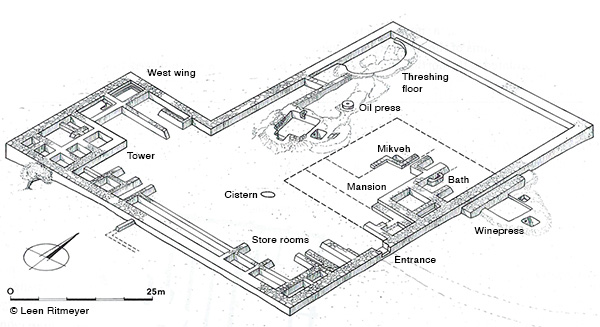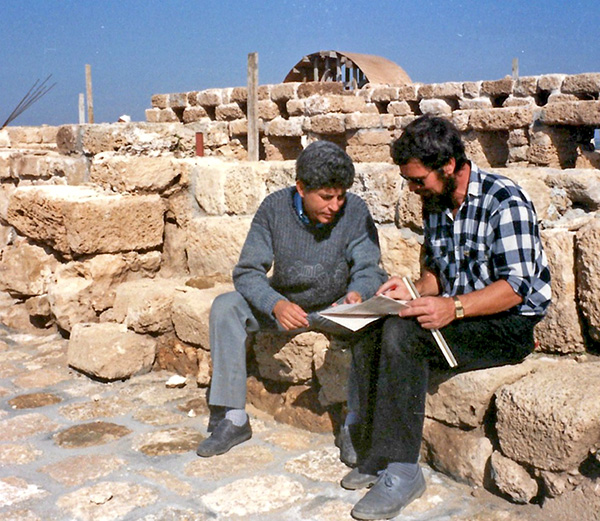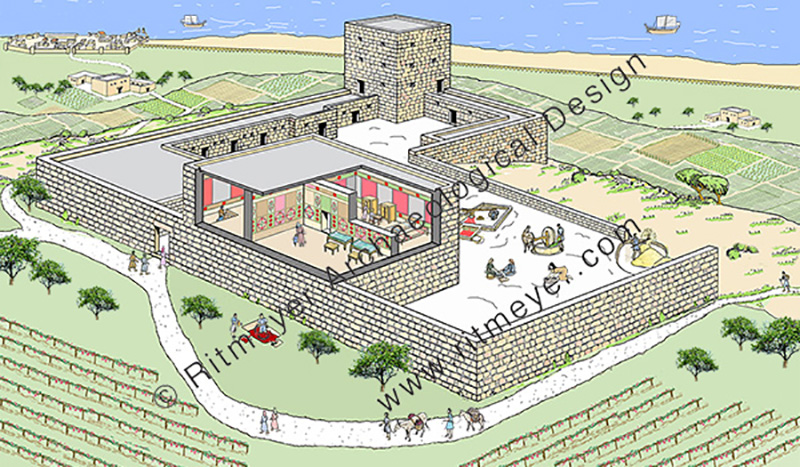In the Gospels, Jesus speaks parables about “masters of the house”. In Matthew 20:1-16, he speaks of a master of the house who hired labourers to work in his vineyard, and in Matthew 21:33-39 of another master of the house who planted a vineyard and let it out to tenants. There are also references in Mark and Luke.
The Greek word for ‘master of the house’ is oikodespotes. Many lessons can be learnt from these parables which stresses the authority of the master of the house, but here we would like to examine the archaeological background of the parable.
From the description in the Gospels, this was a wealthy landowner, who had vast tracts of lands with vineyards, oliveyards and agricultural fields for the growing of crops. No wonder he needed labourers to work in his fields at harvest time. These landowners would have lived in large country mansions with outbuildings to store their crops and with installations, such as winepresses and olive presses, for post-harvest activities.
Such an estate from the Second Temple period was found on Mount Carmel, in the grounds of Ramat haNadiv, the Rothschild Gardens near Zichron Ya’akov. It is called Mansur el-‘Aqeb in Arabic or Horvat ‘Aqav in Hebrew. Here, a fortified farmstead, surrounded by a wall and protected by a large tower, was discovered. It was L-shaped with the longest walls about 200 feet (60m) long and a surface of 0.7 acres (2,800m2). Inside the compound were the remains of extensive living quarters, storerooms, two winepresses, an oil press and a threshing floor. As the lower part of a mikveh (ritual bath) was found inside the building, the owner must have been Jewish.

The mansion is located at the highest point of the southwest cliff line of Mount Carmel, and overlooks the agricultural fields below. Caesarea by the Mediterranean Sea can be seen in the distance.

After the destruction of this complex in 70AD, a farmstead was built over the remains of the 1st century estate in the Byzantine period, confirming the importance of the location and ground of this agricultural estate.
In the late 1980’s, I was asked by the excavator, Yizhar Hirschfeld, to restore a circular Byzantine winepress.

This was followed up by a request to restore the whole site and design explanatory signs.

Eventually these black and white signs faded and the metal frames rusted. A few years ago, I was asked to design new signs which were to be done in color.

When the pandemic is over, God willing, tourists and visitors will again be able to visit this fascinating archaeological site. We have found “reading in the ruins” one of the most effective ways to bring an ancient site to life. Reading the parables that Jesus spoke about landowners or masters of the house in this particular farmstead, paints a vivid picture in the mind and illuminates the cultural and material background.

